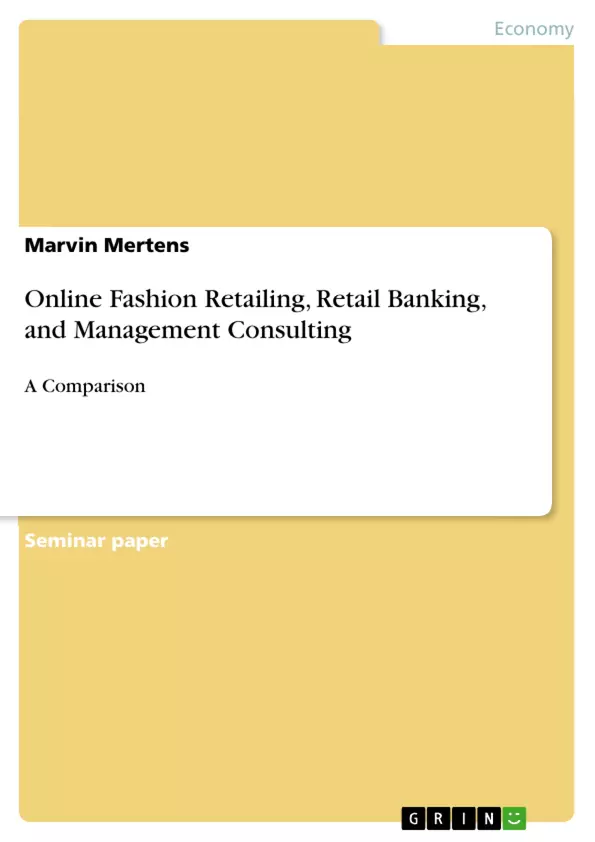In this scientific essay, the three service operations online fashion retailing, retail banking, and management consulting are compared against the background of both Silvestro et al.'s (1992) service classification model and Heskett et al.'s (1994) service profit chain model. At the end, a critical analysis as to whether the classification of the service operations according to Silvestro et al.'s model explains and justifies the findings in the context of Heskett et al.'s model is conducted.
Inhaltsverzeichnis (Table of Contents)
- Introduction
- Comparison of online fashion retailing to retail banking and management consulting regarding Silvestro et al.'s classification model
- Comparison to retail banking
- Comparison to management consulting
- Comparison of online fashion retailing to retail banking and management consulting regarding the service profit chain
- Comparison to retail banking
- Comparison to management consulting
- Discussion whether the classification of the service operations explains and justifies their applicability with regard to the service profit chain
Zielsetzung und Themenschwerpunkte (Objectives and Key Themes)
This paper compares online fashion retailing (OFR) to retail banking (RB) and management consulting (MC) using two classification models. It analyzes the characteristics of each service operation and examines how they relate to the service profit chain.
- Classification of service operations using Silvestro et al.'s model
- Analysis of customer-employee interaction and service customization in different sectors
- Application of the service profit chain model to online fashion retailing, retail banking, and management consulting
- Impact of service operations on customer satisfaction, loyalty, and profitability
- Evaluation of the applicability of the service profit chain model in different service contexts
Zusammenfassung der Kapitel (Chapter Summaries)
The introduction provides an overview of the research context and defines the key terms used in the paper, including online fashion retailing, retail banking, and management consulting. It also outlines the classification models that will be employed in the analysis.
Chapter 2 compares online fashion retailing to retail banking and management consulting using Silvestro et al.'s classification model. It examines the characteristics of each service operation in terms of customer-employee interaction, service customization, and the number of customers processed per day.
Chapter 3 continues the comparison by analyzing how online fashion retailing, retail banking, and management consulting relate to the service profit chain. This model focuses on the link between internal service quality, customer satisfaction, customer loyalty, and profitability.
Schlüsselwörter (Keywords)
Online fashion retailing, retail banking, management consulting, service operations, Silvestro et al.'s classification model, service profit chain, customer satisfaction, customer loyalty, profitability, front office, back office, service customization, customer-employee interaction.
- Quote paper
- Marvin Mertens (Author), 2015, Online Fashion Retailing, Retail Banking, and Management Consulting, Munich, GRIN Verlag, https://www.grin.com/document/293089



